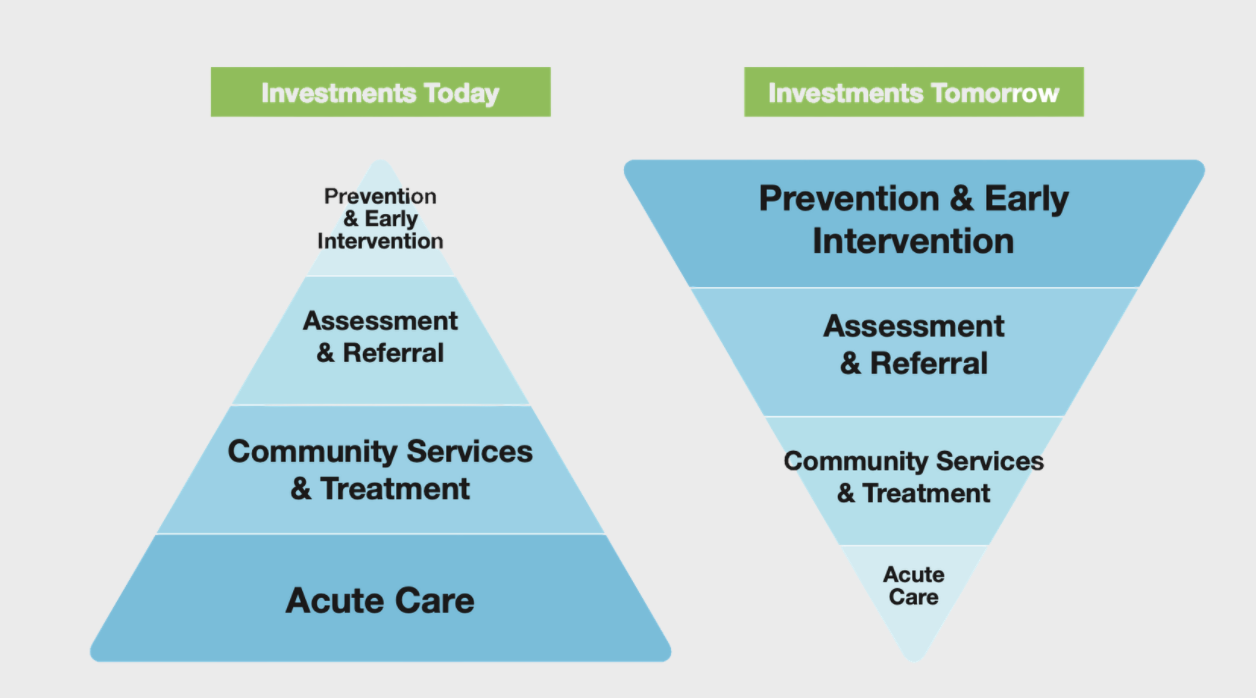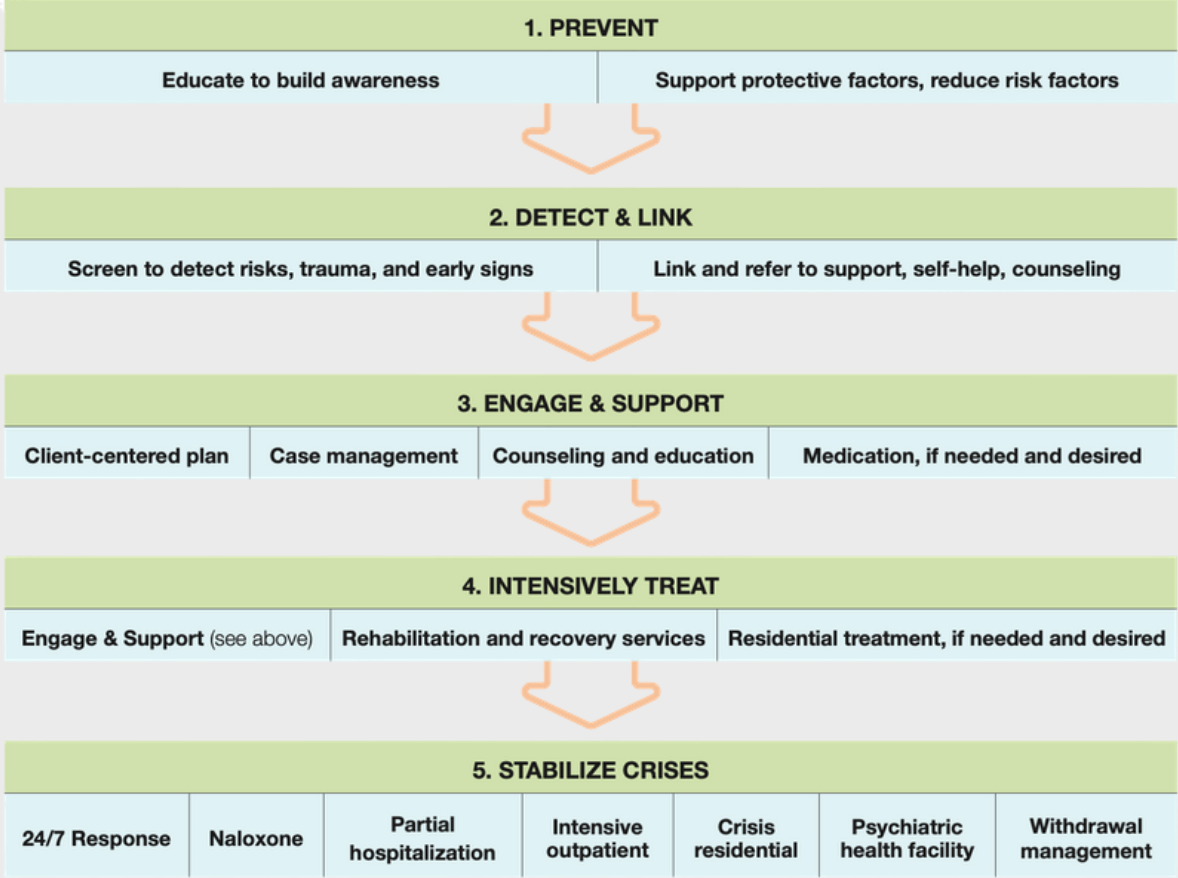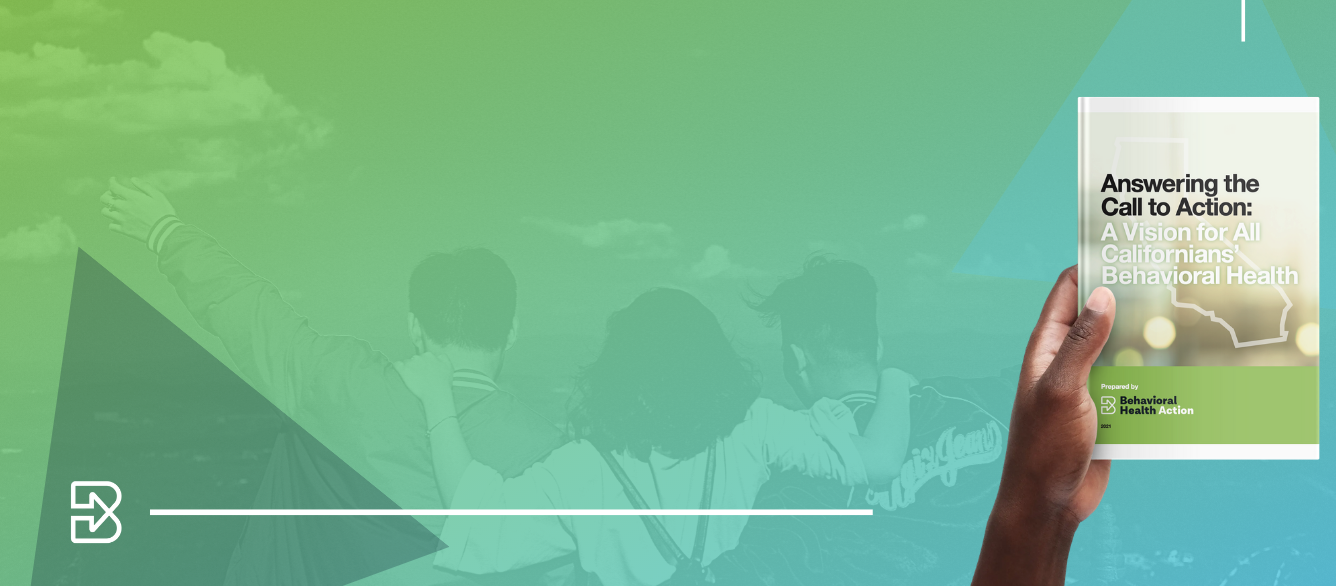A Call to Action
In 2021 Behavioral Health Action — a coalition of more than 50 statewide organizations united to raise awareness about behavioral health issues in California — worked to develop a model for behavioral health in California. As this report was prepared for release in early 2020, COVID-19 changed the world. It exacerbated behavioral health challenges by creating new obstacles for those already in distress and increased the ranks of those who need care.
Economic insecurity, social isolation, health concerns, the strain of caring for others or working on the front lines — all have taken their toll. Behavioral health care needs have never been greater – for health care workers, families and children, and those in ethnic and minority communities that have been disproportionately hard hit by the COVID-19 public health emergency. Consider:
- More than half of people who lost income or employment report negative mental health impacts and Black and Hispanic adults are more likely than others to say they or someone in their household has lost a job or taken a cut in pay due to the outbreak.
- Lower income people report higher rates of major negative mental health impacts compared to higher income people.
- People over 65 report increased anxiety, and parents with children in K-12 schools report concern for their children’s social and mental wellness.
- Front-line workers are experiencing high rates of burnout and increased anxiety. A poll in mid-April found that 64% of households with a health care worker said worry and stress caused them to experience at least one adverse effect on their mental health.
- For Black Americans, the recent, frequent images and viral videos of police brutality against Black people have compounded the disproportionate impacts of COVID-19.
It is against this backdrop that one in four Americans requires behavioral health care, and that number will grow. Nationally, 13.3% of adults reported new or increased substance use as a way to manage stress due to COVID-19. In July 2020, nearly half of Californians reported symptoms of generalized anxiety disorder or major depression since the start of the public health emergency.
Action is Needed Now
Action cannot be delayed. We must learn from the 2020 public health emergency, begin the change that will improve peoples’ lives – and in the process, better prepare ourselves for future crises.
To address California’s behavioral health crisis, strategies must mirror those in primary health care, where the goal is to prevent illness by detecting early signs. Investing in prevention, early intervention, and a continuum of services in every community, will help Californians with behavioral health needs avoid acute care, hospitalization, incarceration, and institutionalization. The graphic below depicts the shift California must make to successfully meet the behavioral health needs of today and tomorrow.
INVERTING THE TRIANGLE

A Roadmap to Change
To address the decades-old, systemic barriers that currently inhibit strong behavioral health care, California must set and monitor the goal to improve by at least 10% per year on several key indicators:
- Reduce the delay from onset of symptoms to engagement in treatment for mental health and substance use disorder needs.
- Reduce the disparities in behavioral health service utilization among racial, ethnic, and sexual orientation/gender identity populations.
- Reduce the proportion of individuals with mental health and substance use disorder needs in jails and prisons.
- Reduce the rate of re-hospitalization following a psychiatric hospitalization.
- Increase the number of children and youth receiving screening for behavioral health needs.
- Improve the satisfaction of consumers and families with the behavioral health care services they receive.
Progress on these community-level goals can be achieved if California adopts and enforces an effective, equitable standard of care for behavioral health, detailed below:
CONTINUUM OF BEHAVIORAL HEALTH INVESTMENTS



